March 12 marks the 50th day since Wuhan declared a lockdown in an effort to curb the spread of the COVID-19. As of Friday, with 49,991 confirmed cases and 2,436 deaths, people in the epicenter had paid a high price to contain the epidemic. Without the sacrifices of people in Wuhan and Hubei province, it's hard to imagine what the consequences will be. Liu Yu, a photo journalist from Xinhua News Agency and the China Photographers Association, used his camera to document the lockdown days of the city.

The photo shows the last 49 patients discharged from the makeshift hospital at Hongshan Stadium in Wuhan on Tuesday. March 10 marks the suspension of all makeshift hospitals in Wuhan. (Photos: Liu Yu)
Just like WHO Director-General Tedros Adhanom Ghebreyesus said at a press conference, "Wuhan people and Hubei province in general are paying a lot. I would like to appreciate them and thank them for their cooperation for believing that the actions they are taking protect the people and protect the rest of the world." As many labeled Wuhaners as carriers of the virus and discriminated against them, people should eradicate such prejudice and instead thank Wuhaners for the sacrifice they made.

The photo shows a flyover near Xiaodongmen in Wuhan.
The lockdown move was unprecedented in that it not only halted transportation in and out of the city but also locked every residential community with quarantine walls. For a city with a population 1.3 times that of New York, though demands for daily necessities were guaranteed, individuals in the mega-city still might encounter some trouble.
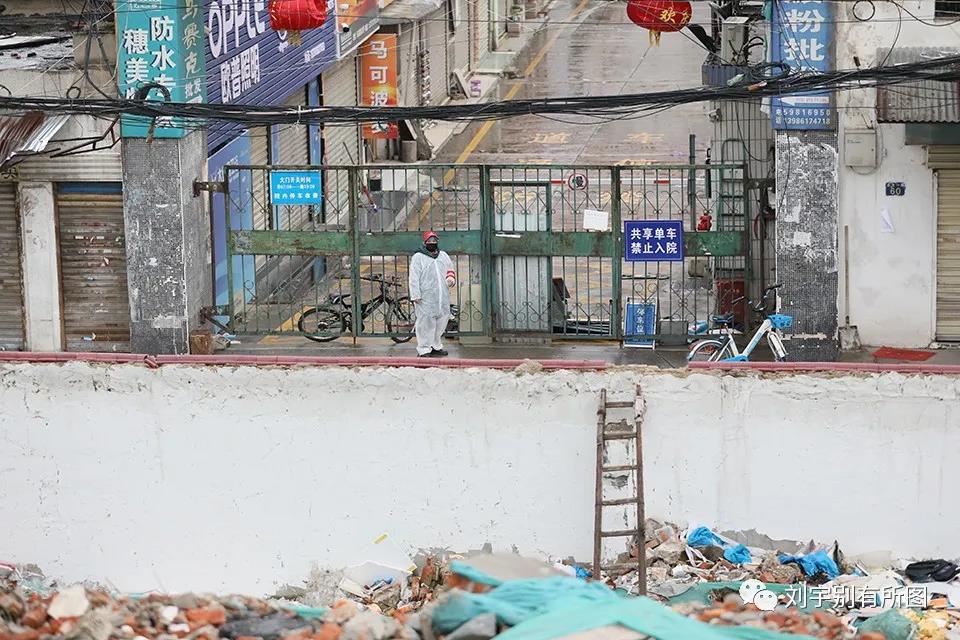
The photo shows volunteers working at the gate of a residential quarter.
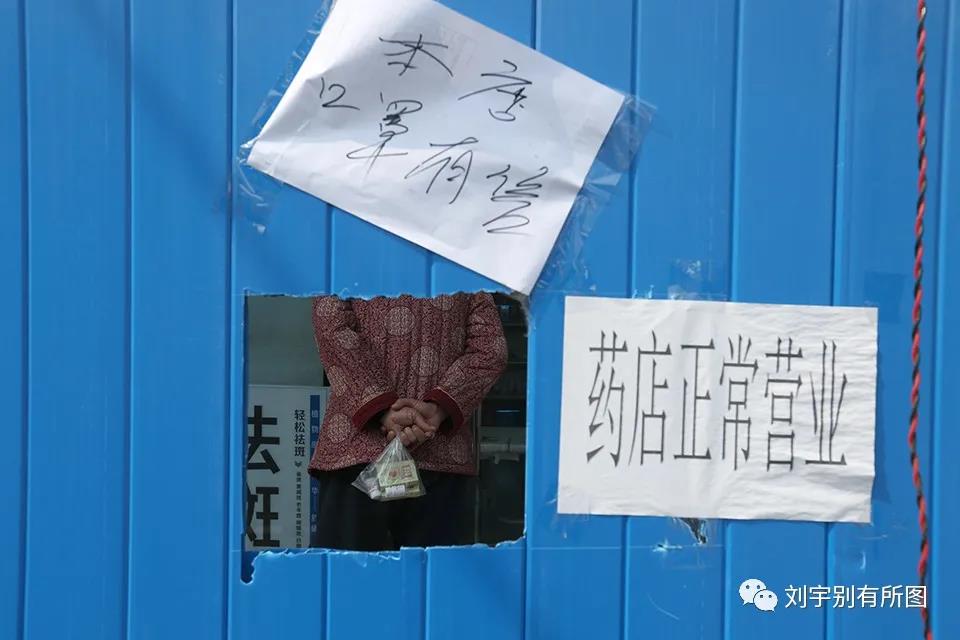
The photo shows a drug store in Jiangan District cutting a hole in the quarantine wall to sell drugs to local residents.
Wuhan is full of old residential communities. Many families use gas tanks to cook at home. As many communities banned electric bikes and tricycles, many people who were responsible for transporting gas tanks had to carry 15-kilo tanks and climb the stairs to send them to different households. Without them, many families wouldn't be able to cook.
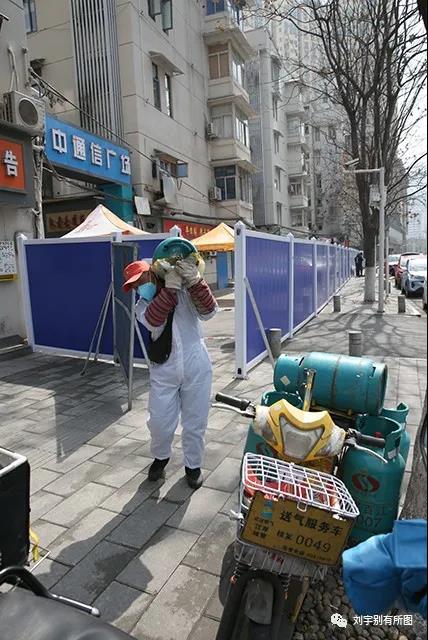
The photo shows a staff member carrying gas tanks to Lanlingcun Residential Quarter in Wuhan.
Many stores on Zhongshan Road which used to sell cellphones and digital devices are now closed. A volunteer in a small shop nearby which remained open said they mainly served the medical staff and sometimes helped residents with their cellphone problems. It's also important as people used cellphones even more frequently during the epidemic outbreak, so mechanical problems really affected their daily life.
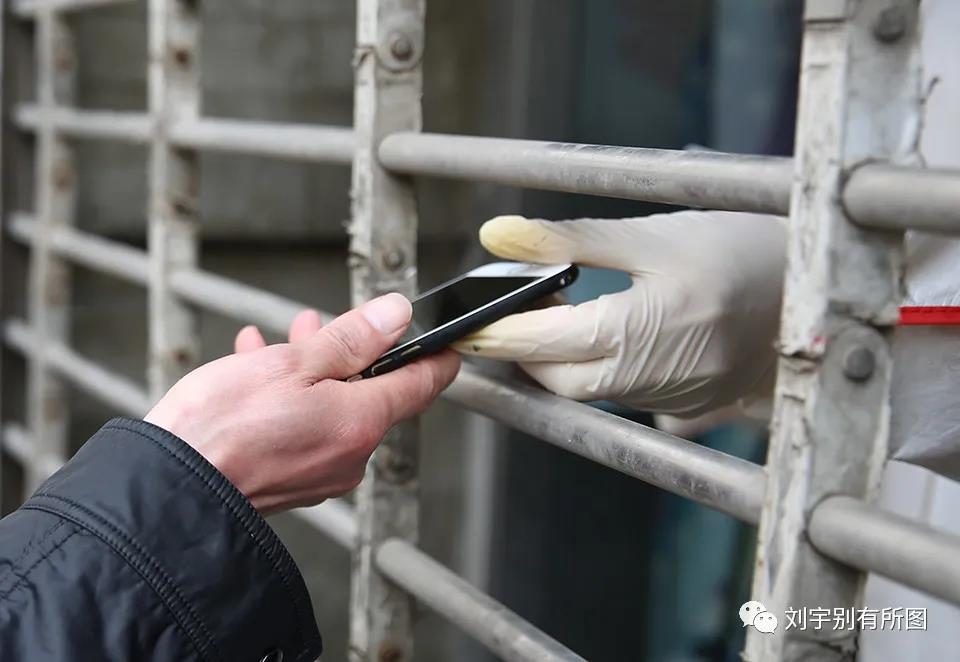
The photo shows a store on Zhongshan Road open to help local residents repair their cellphones.
The lockdown life is more difficult for people with disabilities. Near Yiyuan Street, a man walked around the quarantine wall for awhile and looked across the wall, probably looking for someone. It turned out that the man was deaf-mute, trying to find someone he was familiar with.

The photo shows a deaf-mute man looking over the quarantine wall to search for someone in the residential community.
Days are also hard for the elderly. Wuhan has allocated most of its medical resources for treating COVID-19 patients. But seniors with other diseases find it difficult to seek medical treatment at a hospital. At Wuhan Hospital of Traditional Chinese Medicine, a man was spraying alcohol to help sterilize his 90-year-old mother as she suffered from a stomach problem. Due to the suspension of public transportation inside the city, they had to wait for the car sent by the community to pick them up.
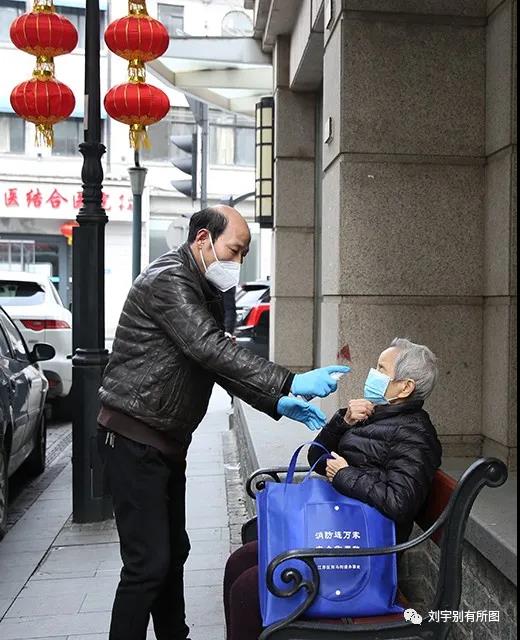
The photo shows a man disinfecting his 90-year-old mother.
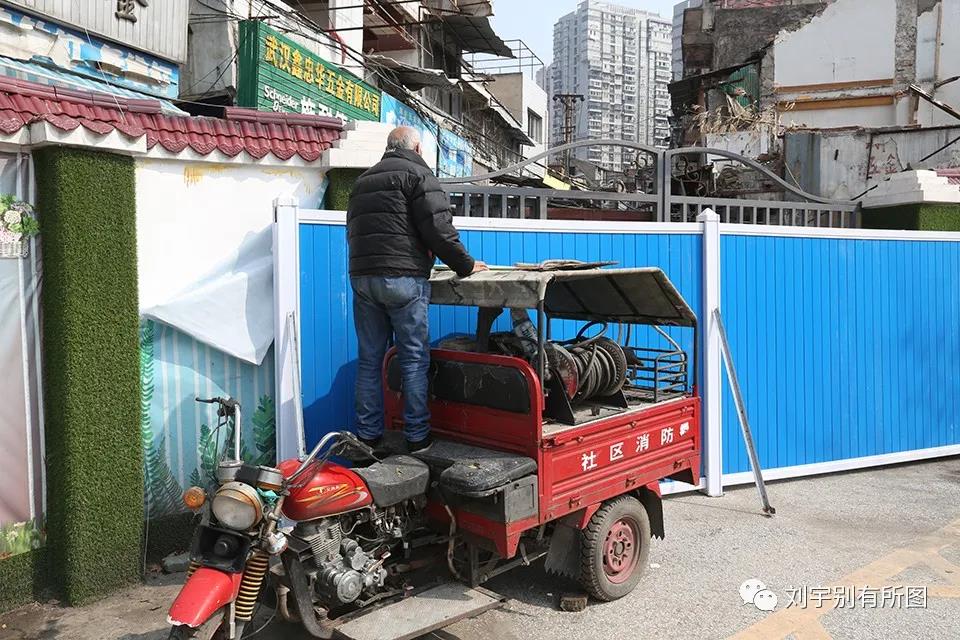
The photo shows a senior trying to climb over the quarantine wall.
Many who worked or temporarily came to the city for business or travel were stranded in the city. The local government has already helped them set up relocation sites and provide living allowances.
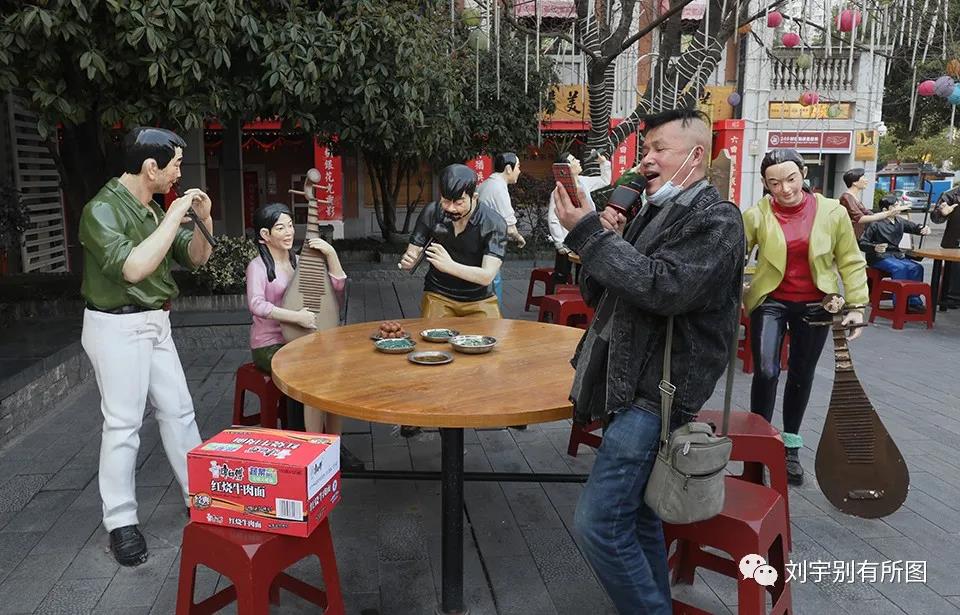
The photo shows a 50-year-old man from Xiangyang stranded in Wuhan singing in front of the statutes at a square.
It's unconceivable how hard life can be for any household to have an infected family member. In one neighborhood, the entrance of one building is blocked by bicycles and road barriers because there are patients with fever living in the building, as shown on the written warning pinned to the wall by the side.

The photo shows an elderly man living in the building with fever patients looking out the window.

The photo shows community volunteers bringing mutton for a Hui resident living in the Yiyuan Road, Wuhan.
The tolerance, patience and optimism shown by Wuhaners was especially impressive in the past 50 days. Neighbors in the communities helped each other by setting up friends circles and purchasing daily necessities together.
Many people chose to be volunteers to help serve residents and medical personnel even if it meant a greater chance of infection. People who worked nonstop during this period like deliverymen and sanitation workers helped make sure that services for citizens were uninterrupted during the outbreak.

The photo shows a resident surnamed Sun registering as a volunteer.
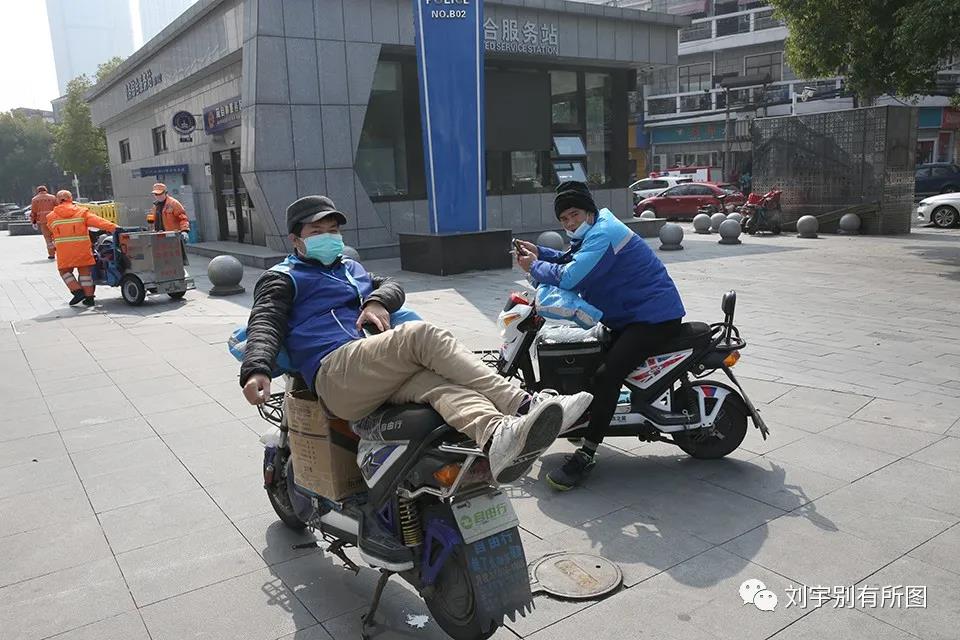
The photo shows sanitation workers and couriers resting on a street in Wuhan.
With cherry blossoms decorating the city and spring approaching, people look forward to witnessing the mega-city restoring order and the epidemic fully contained soon. But when we look back on the disaster in 2020, the sacrifice that Wuhaners made during the lockdown should never be forgotten.
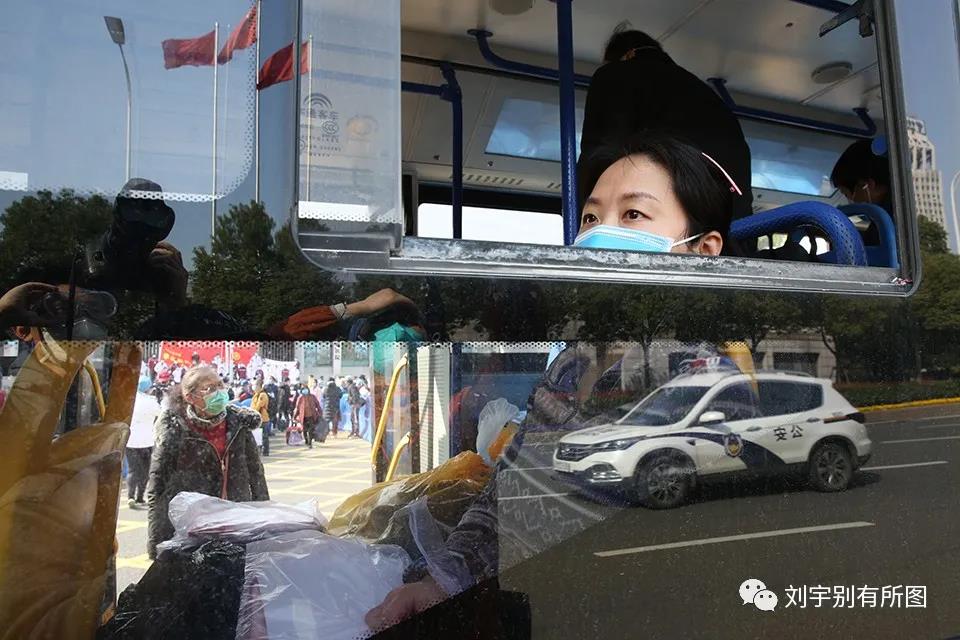
A female patient surnamed Li is one of the last batch of infected patients discharged from the makeshift hospital at Hongshan Stadium in Wuhan. Her parents are still under treatment in Huoshenshan Hospital.
(Compiled by Han Xiaomeng and Li Bowen)


